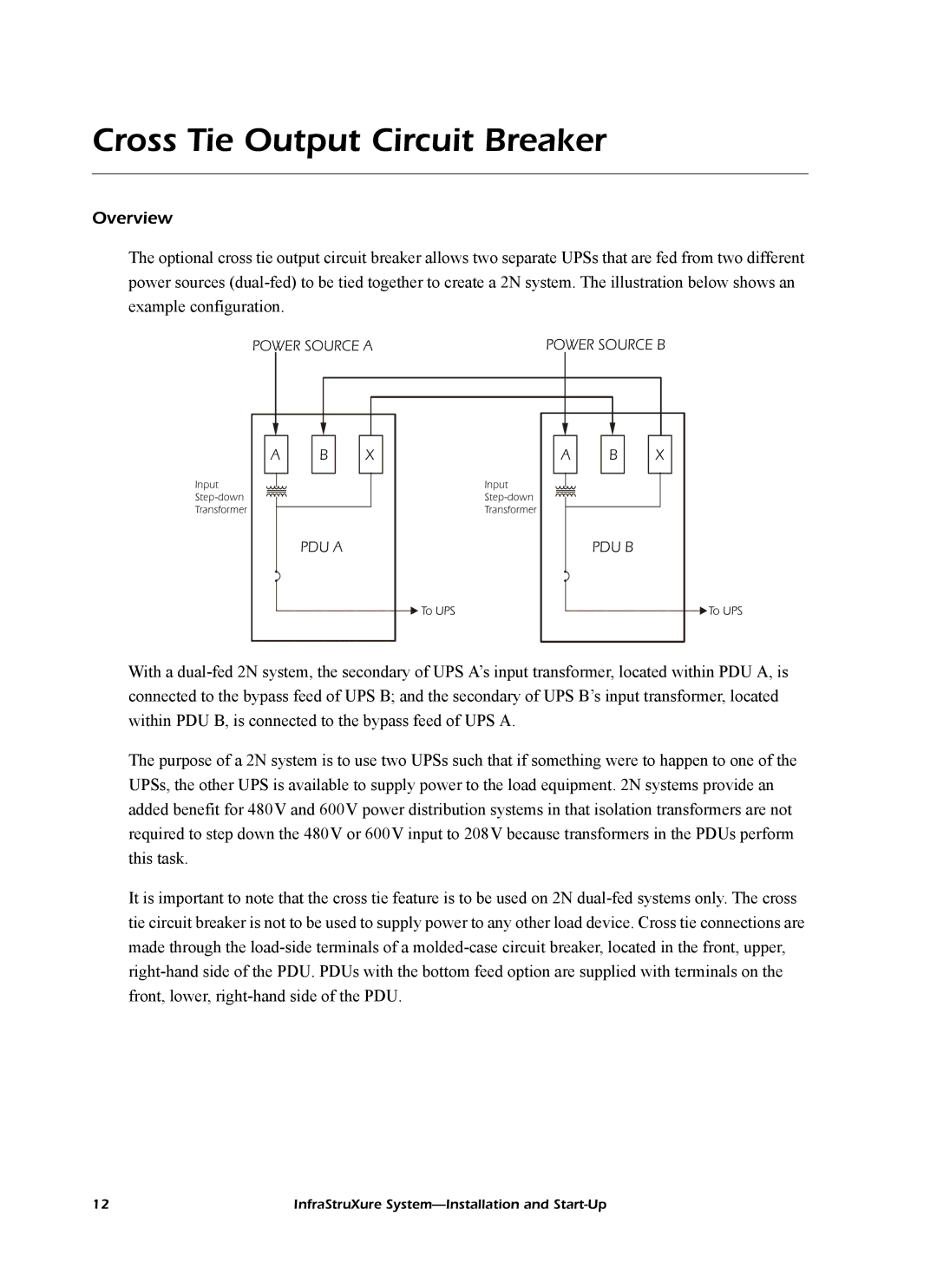
Cross Tie Output Circuit Breaker
Overview
The optional cross tie output circuit breaker allows two separate UPSs that are fed from two different power sources
POWER SOURCE A | POWER SOURCE B |
A
Input
Transformer
B
PDU A
X
A
Input
Transformer
![]() To UPS
To UPS
B
PDU B
X
![]() To UPS
To UPS
With a
The purpose of a 2N system is to use two UPSs such that if something were to happen to one of the UPSs, the other UPS is available to supply power to the load equipment. 2N systems provide an added benefit for 480V and 600V power distribution systems in that isolation transformers are not required to step down the 480V or 600V input to 208V because transformers in the PDUs perform this task.
It is important to note that the cross tie feature is to be used on 2N
12 | InfraStruXure |
